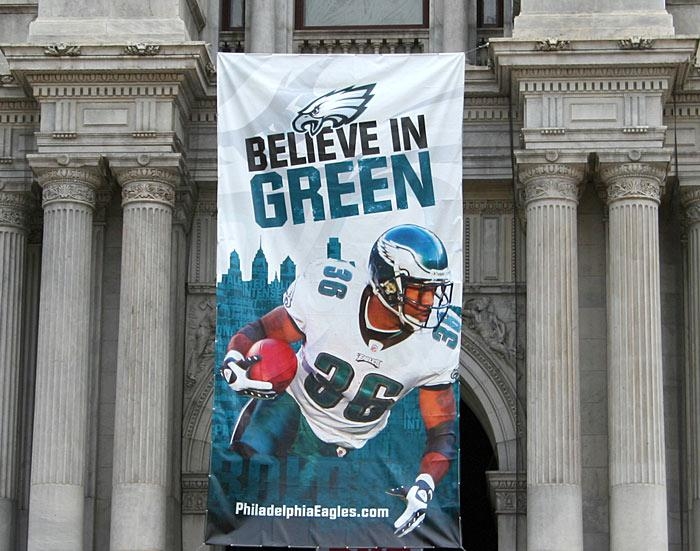Think the only thing green about pro sports is the turf? Think again. As the first crack of the bat rings through the spring air this week, we take a look at sports venues in North America that are scoring big on the eco-field (now if only the teams could do something about all that travel).
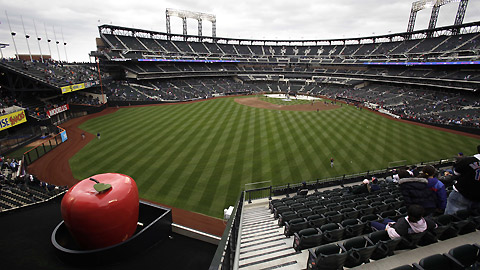
Right lights, big Citi.
New York Mets
1. New York Mets, Citi Field. The brand-spankin’ new ballpark is opening this spring to great green acclaim (if subdued hoopla). While that other team in New York seems to have limited its green efforts to trash talk, fans of the planet can’t help but be excited about Citi Field’s eco-cred: built of 95 percent recycled steel, it features energy-efficient field lighting, waterless urinals, and a green roof. Even its 42,000 seats are a (coincidental) green hue. The club is encouraging employees to bike to work, and hopes that fans will take public transportation to the games — if they can afford to come at all.
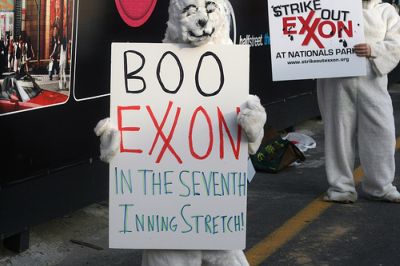
Nats fans couldn’t bear to see Exxon as a sponsor.
Greenpeace
2. Washington Nationals Stadium. The Mets get this year’s moment in the centerfield spotlight, but last spring’s big debut happened farther south. The Nationals tacked on $2 million to a nearly $700 million price tag in order to add features that earned this stadium a LEED rating from the U.S. Green Building Council — the first in the country to do so. From an in-house recycling center to a wastewater system designed to filter out peanut shells and hot-dog bits, the D.C. team thought of everything — except for screening out objectionable anti-green sponsors. Ah well, you can’t win ’em all.
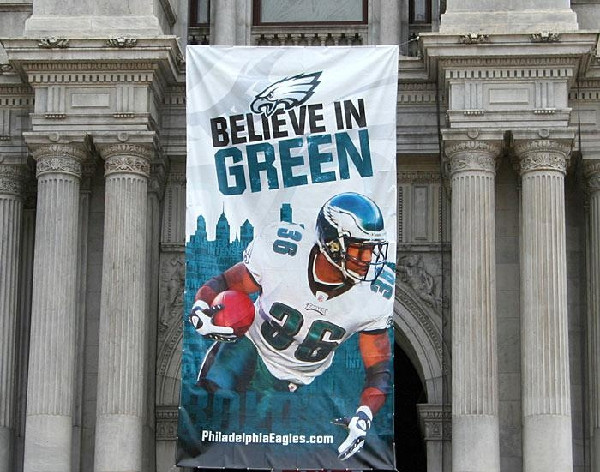
The Eagles take their eco-pride to City Hall.
Philadelphia Eagles
3. Philadelphia Eagles, NovaCare Complex. It seems only fitting that a stadium that sounds like a medical facility is proving to be a shot in the arm for greening operations everywhere. The Eagles launched an organization-wide program called Go Green in 2003, and today the team powers its facilities with clean energy, uses corn-plastic dishes and utensils, and encourages fans to offset their game-day travel. Offshoot projects include Eagles Forest in nearby Neshaminy State Park and a calendar of eco-babes — printed on recycled paper, of course.
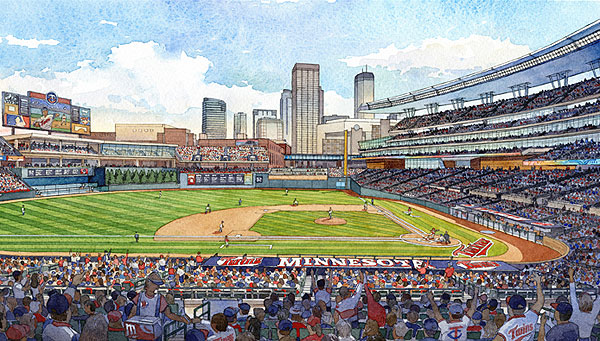
Target Field, spitballin’ distance from downtown.
Minnesota Twins
4. Minnesota Twins, Target Field. Now under construction, this Minneapolis landmark is scheduled to open in 2010. Like the Nationals, the Twins are committed to achieving a LEED rating, and coughing up $2.5 million extra to do so. Green features include such basics as low-VOC carpets and paints, and the club is using local building materials. But more important may be the site itself: Unlike, say, the Mets stadium stuck out in Flushing, Target Field sits right downtown. Reinventing a plot in the city’s warehouse district, the Twins are creating an attraction that will be walkable, bikeable, trainable, and busable for thousands of local fans.
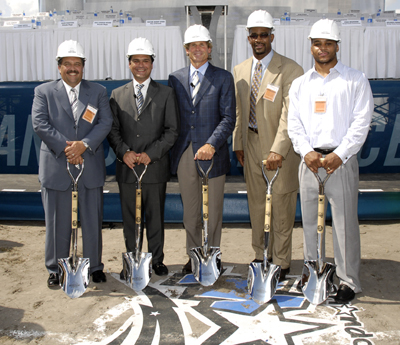
Magic officials at the Events Center groundbreaking.
Orlando Magic
5. Orlando Magic, Orlando Events Center. In another example of smart siting, the Magic is building a multi-purpose events center in a downtown location — and keeping local needs top of mind. The team has hired local companies, will use native landscaping, and even considered neighborhood identity in the stadium’s design. It’s also incorporating water and energy efficiency and other sustainable elements. When the facility opens in 2010, it will be “one of the greenest sports arenas in the country,” according to press materials. Meanwhile, the Magic has kicked off a company-wide greening initiative, including a recycling effort at its current home, Amway Arena.
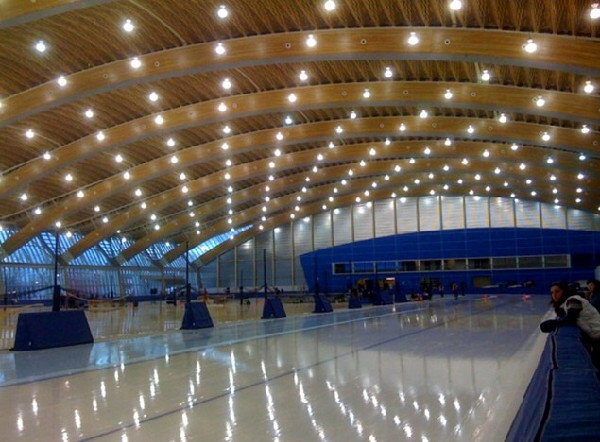
The pine beetle’s loss is the speed skater’s gain.
Horace Chan
6. Vancouver Olympics. The push to make each successive Olympics greener than the last has practically become a medal-worthy event itself, and Vancouver is going for the gold. Greened-up venues for the 2010 games include a speed-skating track that features a roof made of wood salvaged from a pine-beetle infestation; a LEED-gold curling arena that will be converted into a community center after the games are over; and a hockey rink that captures and reuses the energy needed to make its ice. (For more from Vancouver, check out Jonathan Hiskes’ firsthand reports.)
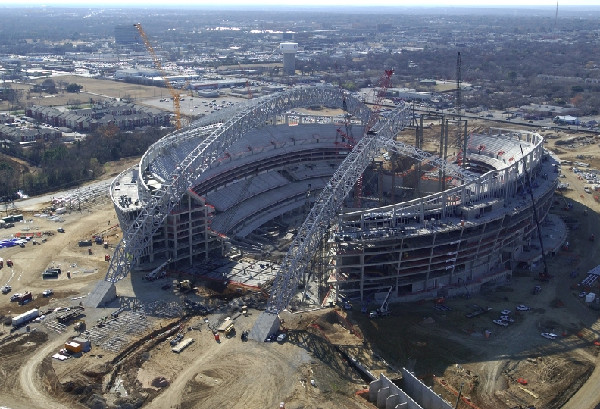
The Cowboys really stepped in it.
City of Arlington
7. Dallas Cowboys Stadium. This here’s a good news-bad news situation. The good news is that the powers-that-be behind the Cowboys’ new $1 billion stadium, opening later this year, have set their sights on sustainability, from a reflective roof to permeable pavement to game-day recycling, and are registering with the EPA to monitor long-term performance. That bad news is they’ve been involved in a major PR wreck — not to mention several lawsuits — over the use of eminent domain to secure land for the facility. Oh, and the stadium isn’t accessible by public transportation. Er … points for trying?
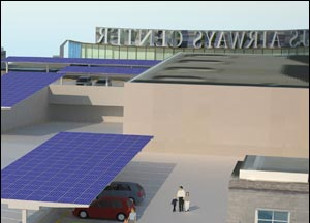
The Suns’ solar future looks bright.
Phoenix Suns
8. Phoenix Suns, US Airways Center. Staying true to their name, the Suns announced last fall that they’d be adding more than 1,100 solar panels to their facility, generating enough energy to power the equivalent of 26 home games a year. And that’s not the team’s only foray into green: when they hosted this year’s NBA All-Star Game, they asked players to create green PSAs, provided “sustainable” T-shirts for volunteers, and pushed recycling. Combine that with the city’s new sustainability plan, and the eco-cred of the Suns is surely rising.

Spurred to action.
TheMuuj/flickr
9. San Antonio Spurs, AT&T Center. It’s not the newest kid on the block, but that makes this arena’s greening efforts all the more impressive. The team recently upgraded its water system with the help of municipal funds, installing efficient fixtures and beginning to use recycled water in its cooling towers. Last year, team owners announced that they were buying wind power to cover 100 percent of their energy usage. And they’re pushing forward on other efforts, including recycling. Said Chairman and CEO Peter Holt, “We really want to be a model for arenas across the country regarding sensitivity to the environment.”
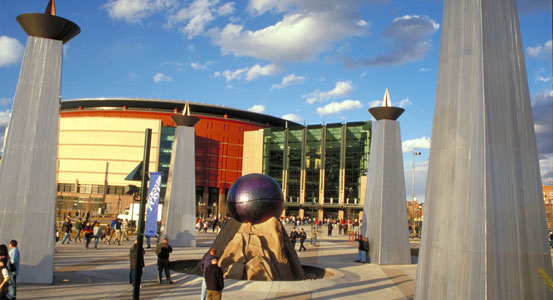
Refreshing? The Pepsi Center.
City of Denver
10. Denver Nuggets, Pepsi Center. Unveiling an initiative called Play Clean last year, arena officials highlighted an impressive array of eco-steps at the Pepsi Center, which is home to three other teams, including the NHL’s Colorado Avalanche. They’re offsetting energy use, installing solar panels, designating hybrid-only parking spaces and a no-idling zone, promoting recycling, and upgrading water fixtures. “Taking care of the environment is a new adventure in our country,” said Denver Nuggets head coach George Karl. “It will bring everybody together.”
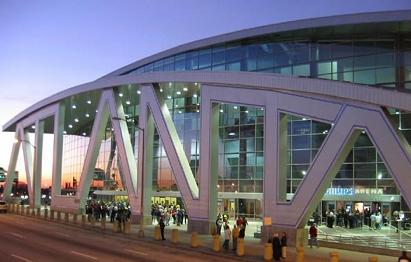
The Hawks and Thrashers call it home.
City of Atlanta
11. Atlanta Hawks, Philips Arena. Thanks to steps including water conservation, recycling, and energy-efficient lighting installation, this 19,000-seat venue — also home to the NHL’s Atlanta Thrashers — was recently awarded LEED certification for operations and maintenance. “My partners and I agree we must continue to find ways to manage our events with the lowest environmental impact possible,” said organization head Rutherford Seydel. “We will continue to work with our fans and partners to raise our green performance and promote conservation throughout metro Atlanta.”

The Heat takes the LEED.
Stone Age Paving
12. Miami Heat, American Airlines Arena. Although Miami Mayor Manny Diaz has been bashed for his pro-development leanings, he’s making great green efforts of late. This year, during the first-ever NBA Green Week, he appeared with Miami Heat owners to announce that their arena had earned LEED certification for operations and maintenance. Because it sits on prime waterfront land, the Heat’s 20,000-seat venue has been controversial among environmentalists, although its architects attempted a place-sensitive design. Next up: A new LEED-silver stadium for the Miami Marlins — yep, you read it right, the team agreed to change its name to help seal the deal. Stay tuned.
North American teams aren’t the only ones going green. Check out more verdant venues from around the world:

A Prince of a Park.
T.S. Rigby
Princes Park, U.K.
The relatively diminutive size of this 4,100-seater is no reflection of the scale of its eco-ambitions. Opened in 2006, the facility boasts a living roof, rainwater collection, solar panels, and energy-efficient lighting, making it the U.K.’s first sustainable small stadium. The club also encourages fans to recycle and use public transportation. So … suck it, Dover.
World Games Stadium, Taiwan
Officials in Taiwan have built a massive solar-powered stadium in Kaohsiung for this year’s World Games, a sort of off-year Olympics (with fistball!). With more than 8,000 solar panels, it’s Taiwan’s largest such installation. Architect Toyo Ito also used local materials, incorporated natural ventilation, and created a design that reminds some of a river.
Beijing Olympics Venues, China
The synchronized drummers and under-aged gymnasts are long gone, but the venues built for last year’s high-profile Olympics aren’t going anywhere. From a swimming site that used spectators’ body heat to warm the pool to solar power at the iconic Bird Nest stadium to the first Olympic Village to earn LEED certification, organizers created an innovative set of reusable structures.
Stade de Suisse Wankdorf, Switzerland
Home to the BSC Young Boys football team, this arena in Bern, Switzerland, boasts the world’s largest stadium-integrated solar power system. With nearly 11,000 solar cells at work, the facility generates enough energy to power 350 four-person households. Built on the site of an old arena, the complex also houses restaurants, shopping, and even a public school.
London Olympics Venues, England
Sustainability is more than a catchphrase for the 2012 Olympics — it’s at the very heart of the plan. The entire complex is an exercise in placemaking; when the Games are over, the Lower Lea Valley will be home to the largest new urban greenspace in Europe, eco-facilities that are usable by the community, new footpaths and bicycle paths, and on-site renewable energy. That’s what the kids call raising the bar.

